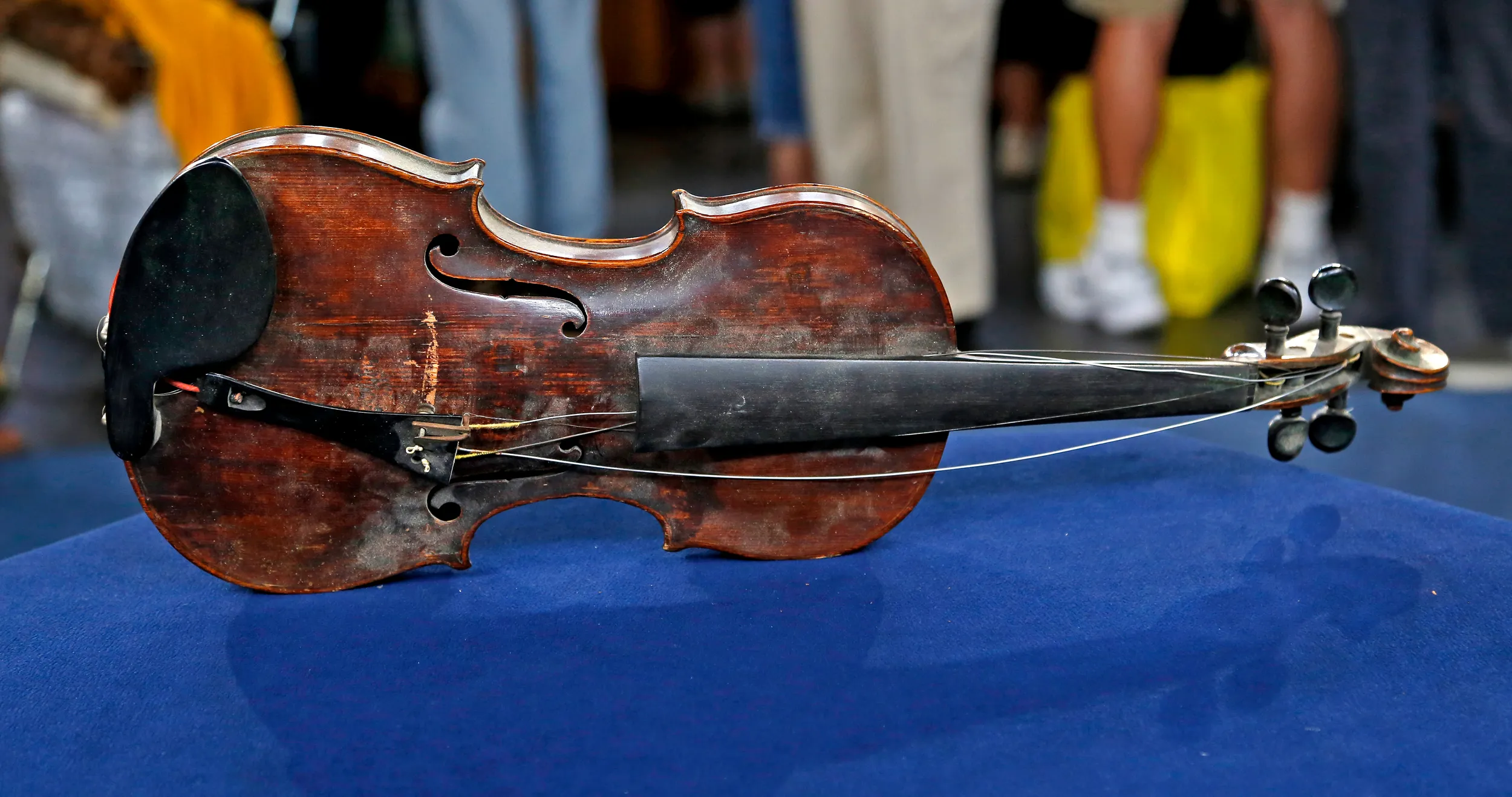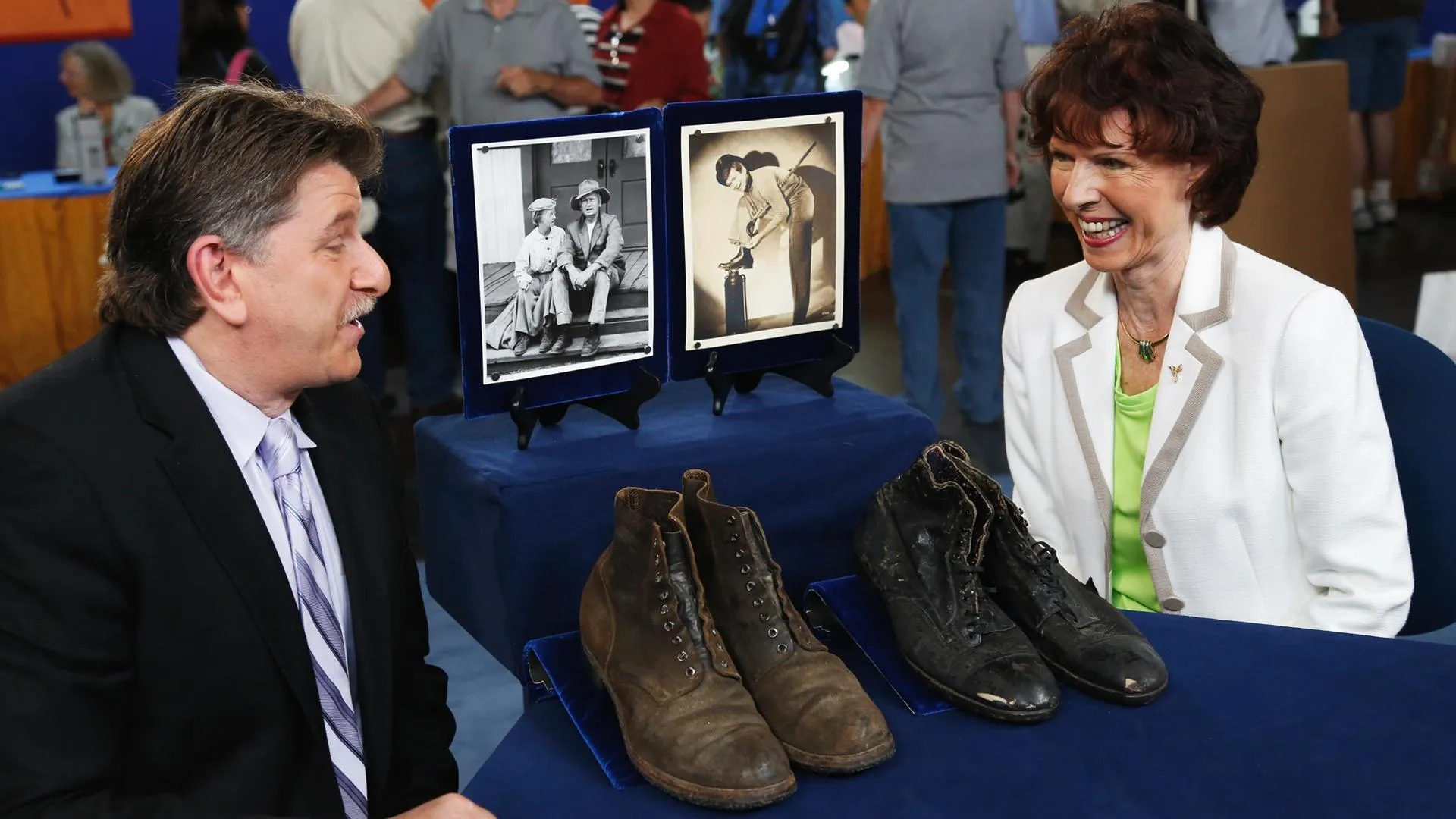GUEST: This came down my mother's side of the family. This belonged to my uncle, but tragedy struck when he was very young and he died in an automobile accident. And after that, the violin was put away, then stayed with my mother for many, many years, and my mother then willed it to me.
APPRAISER: When did your uncle die?
GUEST: I believe he died in his late 20s, so my best estimate would be somewhere in the early '30s, something like that.
APPRAISER: Okay, and was he a pretty serious player?
GUEST: I believe so.
APPRAISER: When I first saw this violin, it looked to me as if it were a violin that had not been played in a very long time.
GUEST: Was the dust the first clue? (laughing)
APPRAISER: There's a lot of dust on this violin, and it's not in playable condition. So, of course, there's no bridge right here where we would expect it to be. And the strings are all loose, and so this is a violin that's been abandoned since your uncle died, is what I'm understanding.
GUEST: Absolutely, absolutely.
APPRAISER: The second thing that I looked at was the label, and that label says "Michael Andreas Partl, Vienna, anno 1741." So, my thinking process is, "Let's see if this violin is what it's labeled." So I look at the outline first, I look at the F holes, and then the type of varnish. And the instrument is absolutely in line with what we would know to be a Michael Andreas Partl.
GUEST: Wow, okay.
APPRAISER: He was one of the finest makers in Vienna in that period of time. He was born in 1704, he died in 1788. He was from a family of violin makers. It's absolutely typical of Viennese making from this period of time. It was modeled after the work of the Amati family from Cremona. The most famous violin makers were from the city of Cremona, Italy. They influenced everything that was happening in Europe. The influence of Stradivari, whose name we all know, did not impact Vienna until much later towards 1800. So in 1741, we were still seeing the influence of Stradivari's teacher, who was Nicholas Amati. If you can see the back of the violin, you'll notice that the varnish is showing a lot of wear. These are real wear patterns that indicate to us and verify age. So, I'm very comfortable that this is not faked to look like it's 200-some years old. The violin needs probably about $1,000 minimum to put it into tip-top playing condition. In the world of violin repair, that's not a lot. And, as is, in the retail world, in a violin shop, this is a violin that has a value of probably $5,000.
GUEST: Wow, that's great. And lots of sentimental value, as well.












